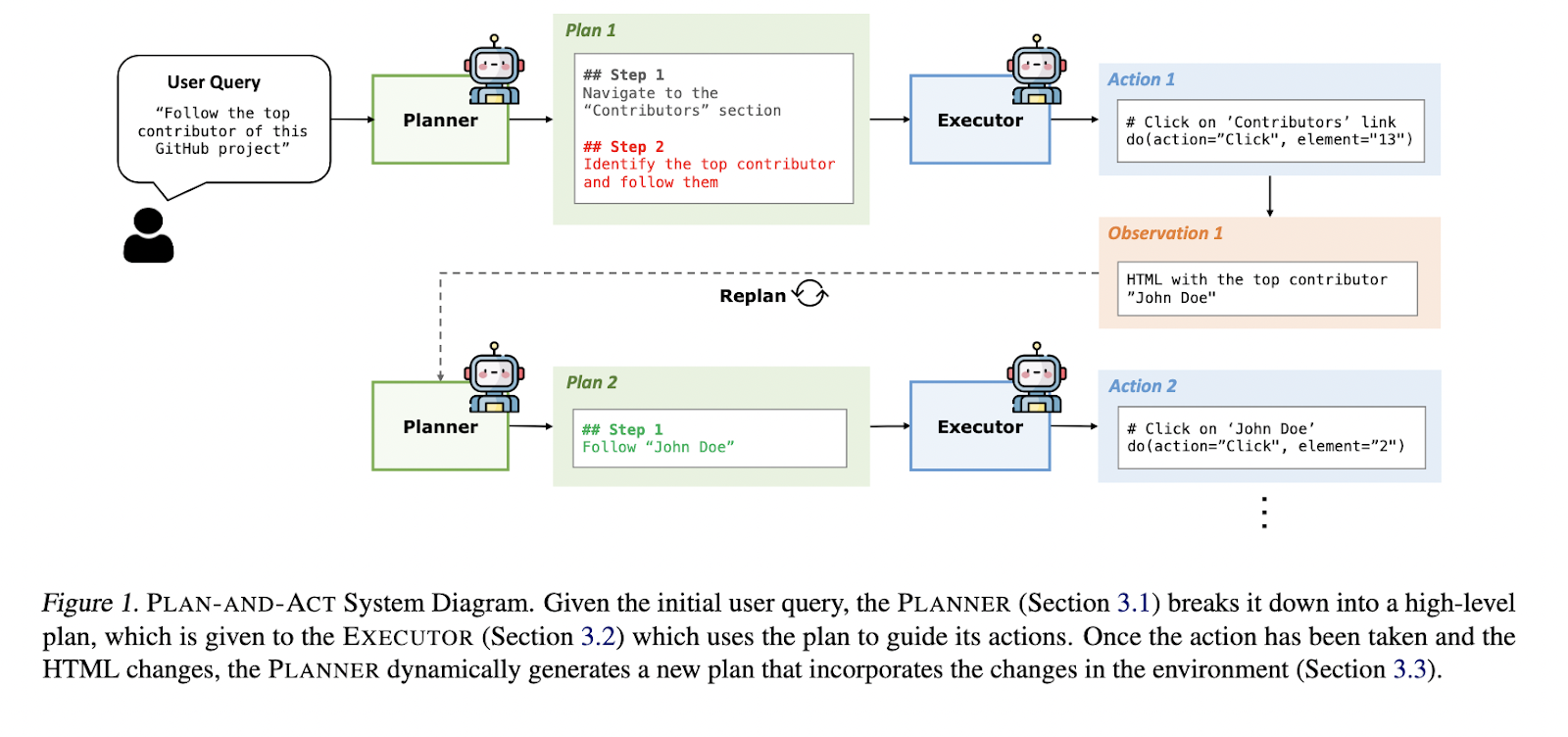
Transforming Business Processes with AI: The PLAN-AND-ACT Framework
The advent of sophisticated digital agents powered by large language models presents a significant opportunity for businesses to streamline their operations and enhance user experiences. A notable advancement in this field is the PLAN-AND-ACT framework, which is designed to improve long-horizon planning capabilities in web-based language agents.
Understanding the Challenges
As companies increasingly rely on AI-driven solutions, the complexity of tasks such as navigating user interfaces and executing commands grows. The primary challenge lies in translating user instructions into a series of precise actions while adapting to dynamic environments. For example, when a user requests information about the top contributor of a project on GitHub, the agent must interpret this request, navigate to the appropriate section, identify the contributor, and act accordingly. In rapidly changing contexts, without a robust planning strategy, agents may provide inconsistent results or fail to perform tasks altogether.
Limitations of Existing Approaches
Previous methods have struggled to effectively address these challenges. Single-agent systems attempted to merge reasoning with action but often faltered due to cognitive overload. Similarly, reinforcement learning approaches showed potential but were hindered by instability and extensive tuning requirements. Moreover, the collection of training data for these models was often time-consuming and impractical.
The PLAN-AND-ACT Solution
The PLAN-AND-ACT framework, developed by researchers from UC Berkeley and supported by industry leaders like Apple and Microsoft, introduces a modular approach that separates planning from execution. This innovative design consists of two primary components:
- PLANNER: Responsible for developing a structured plan based on user requests.
- EXECUTOR: Converts the planned steps into specific actions tailored to the environment.
This separation allows the PLANNER to focus solely on strategy, thereby enhancing the overall reliability and effectiveness of the system.
Innovative Data Generation Method
To overcome the limitations of traditional training data availability, the researchers implemented a synthetic data generation pipeline. This process involved:
- Collecting action trajectories from simulated agents, which consist of sequences of clicks and responses.
- Utilizing large language models to analyze these trajectories and reconstruct high-level plans.
- Expanding the dataset with additional synthetic plans based on failure analysis.
This approach not only saved time but also produced high-quality training data that accurately reflected real execution needs.
Impressive Results
In testing, the PLAN-AND-ACT framework achieved a task success rate of 53.94% on the WebArena-Lite benchmark, outperforming previous models. The results indicated that most performance gains were attributed to enhancements in the PLANNER rather than the EXECUTOR. For example, without a planner, the base executor had a mere 9.85% success rate. Adding a non-finetuned planner increased the success rate to 29.63%, and fine-tuning led to further improvements.
Implications for Business
Organizations looking to leverage AI can draw several insights from the PLAN-AND-ACT framework:
- Identify Automation Opportunities: Assess business processes where AI can add significant value, particularly in customer interactions.
- Define Key Performance Indicators (KPIs): Ensure that AI investments positively impact business outcomes.
- Select Customizable Tools: Choose AI solutions that align with your specific business objectives.
- Start Small: Begin with pilot projects, gather effectiveness data, and gradually expand AI integration.
Conclusion
The PLAN-AND-ACT framework exemplifies how strategic planning, coupled with innovative data generation, can bridge the gap between understanding user goals and executing effective actions in dynamic environments. By emphasizing structured planning, this framework not only addresses existing challenges but also lays the groundwork for broader applications in AI. Companies that embrace this approach can significantly enhance their operational efficiency and improve user satisfaction.
If you need guidance on managing AI in your business, please contact us at hello@itinai.ru. Follow us on Telegram, X, and LinkedIn.



























